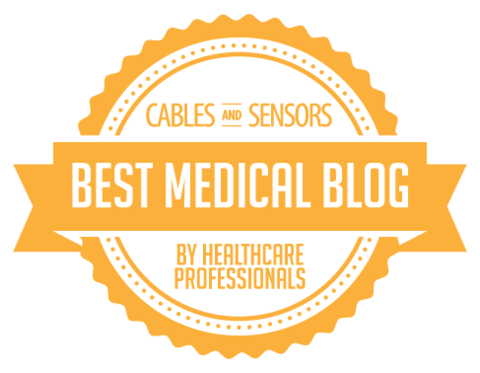Heart Healthy Tips – 3 Key Minerals to Lower Blood Pressure
1. Reduce your SODIUM intake.
Too much sodium in your diet can contribute to high blood pressure and make your blood pressure treatment less effective. Simply reducing your sodium intake to 2.3 grams (6 g table salt) daily can decrease your blood pressure.
The average American consumes 6-18 grams of table salt daily (about 3 teaspoons). The body only needs 200 mg daily. That is 30 times less than what American’s typically consume.
To be heart healthy, sodium intake should be reduced to less than 2300 mg (1 teaspoon) daily.
Quick tips to cut back on sodium:
- Don’t add salt when boiling water.
- Leave the salt shaker off the table.
- Read food labels to avoid foods high in sodium.
- Avoid foods high in sodium, such as gravies, cheese, and soy sauces.
2. Increase your POTASSIUM intake.
Potassium works to balance out the sodium in your diet. An adequate potassium intake can lower systolic pressure ~4.4 mm Hg and diastolic pressure ~2.5 mm Hg.
Good potassium sources:
Cantaloupe, bananas, dates, nuts, oranges, and green leafy vegetables
Maintaining an adequate intake of potassium is especially important if you are taking diuretics. Some diuretics increase potassium loss via the kidneys.
3. Add more MAGNESIUM to your diet.
Research has shown an inverse relationship between magnesium and blood pressure. In other words, individuals with a high magnesium intake, typically have a low blood pressure.
Good sources of magnesium include:
Peas, beans, whole grains, nuts, seeds, lima beans, squash, broccoli, spinach, and seafood
Supplemental magnesium of ~500 mg can effectively lower blood pressure. Some studies have found magnesium supplements to reduce systolic blood pressure 2.7 mm Hg and diastolic 3.4 mm Hg. Discuss all supplements with your MD!
All the best,
Lisa Nelson RD
Heart Healthy Tips
Lower Blood Pressure – What Does Chicken Soup Have to Do with Blood Pressure?
I read some interesting research lately that I want to share related to chicken and blood pressure.
We know that blood pressure is a significant risk fact for heart disease and stroke. It’s estimated that around 1 billion people worldwide live with high blood pressure. Being able to control high blood pressure through food selection is very important.
The collagen in chicken is being researched for use as a blood pressure medication, with actions similar to ACE inhibitors (i.e. lisinopril). Japanese studies have found 4 proteins in the chicken that contain collagen with actions similar to the blood pressure medication when tested in rats.
Chicken legs and feet contain more collagen that chicken breast meat. FYI – The legs and feet are the yellow part of a chicken leg with a nail on the end. A “chicken collagen hydrolysate” was prepared in the study and fed to rats and the effects on blood pressure where examined. The rats showed a drop in blood pressure 4 hours after receiving the mixture orally, with the lowest blood pressure reading after 8 hours. Long term studies showed improved blood pressure after one week of treatment, with a significant reduction after 2 weeks.
The study states that the “chicken collagen hydrolysate” mixture used in the study is composed of foods that can be easily added to a typical daily diet. For individuals with high blood pressure, increasing intake of these foods will promote a normal blood pressure. What I want to know – who is going to eat a chicken leg/foot? How do the researchers think this will become a normal part of the diet? My question wasn’t answered in the study results. I’m thinking it’ll be made into a food additive that will allow certain foods to be marketed as “functional” for blood pressure reduction, but we’ll have to wait and see.
The title of this post was only used to catch your attention. I’m not recommending you eat more chicken soup to lower your blood pressure. Way too much sodium added to soup for it to be beneficial!
Be sure to visit https://www.lisanelsonrd.com to sign up for The Heart of Health ezine.
All the best,
Lisa Nelson RD
Reduce Salt to Lower Blood Pressure
 Too much sodium in your diet can contribute to high blood pressure and make your blood pressure treatment less effective.
Too much sodium in your diet can contribute to high blood pressure and make your blood pressure treatment less effective.
Sodium versus Table Salt
First, let’s clear up the confusion about the difference between sodium and table salt. Table salt is a combination of the two minerals sodium (Na) and chloride (Cl). Table salt is 40% sodium and 60% chloride.
Sodium
Sodium is a mineral that is vital for health. Sodium maintains fluid balance, which is why it plays a key role in blood pressure control.
There is a direct relationship between sodium intake and blood pressure. Reducing sodium to 2.3 grams sodium (6 g table salt) daily is linked with decreased blood pressure levels.
Sodium Intake
A typical U.S. diet means a high sodium diet. The average American consumes 6-18 grams of table salt daily (about 3 teaspoons). The body only needs 200 mg daily. That is 30 times less than what American’s typically consume.
To be heart healthy, sodium intake should be reduced to less than 2300 mg (1 teaspoon) daily.
Sources
Sodium is found naturally in food, but most sodium we consume has been added for food preservation and preparation. To successfully reduce sodium intake you need to be aware of the table salt you add to foods and the sodium pre-added to foods.
75% of the typical American diet comes from processed foods – sauces, soups, condiments, canned foods, and prepared mixes. Fast food is another common source of sodium.
Tips to Reduce Sodium Intake
Use less salt at the table and when cooking.
If you automatically add salt to food before tasting it, this is the first place to start cutting back. You have many options for flavoring your food in place of salt – salt substitute, herbs, and spices.
If you want to try salt substitute, check with your MD. Salt substitutes contain potassium and needs to be monitored if you have kidney disorders.
Read labels when buying prepared and prepackaged foods.
When reading labels, here are some terms to avoid:
• Salt (sodium chloride)
• Monosodium glutamate (also called MSG)
• Baking soda (sodium bicarbonate)
• Baking powder
• Disodium phosphate
Select canned, frozen, and snack foods without added salt, such as unsalted nuts, unsalted broths, and no added salt canned vegetables. Better yet, switch from canned vegetables to frozen with no added salt or fresh veggies. Limit salty snacks like chips, pretzels, and salted nuts. Cheese is anther high sodium source.
Make healthy choices when dining out.
Here are some tips to enjoy a meal out and maintain a low sodium intake:
• Use pepper for extra seasoning instead of salt.
• Avoid sauces or gravies.
• Order broiled and baked meats.
• Avoid seasoned or blackened menu items.
• Avoid menu items with a lot of cheese.
• Avoid soy sauce and MSG.
Salty flavor is something you have trained your body to prefer. You can retrain your taste buds over time with the ultimate goal of lowering high blood pressure.
To receive heart health and weight loss tips from dietitian Lisa Nelson, subscribe to The Heart of Health and grab your free report “Stop Wasting Money – Take Control of Your Health” today!
All the best,
Lisa Nelson RD
Heart Health – Are you getting enough potassium?
If you have high blood pressure or want to take steps to prevent high blood pressure, it’s very important you balance your intake of sodium and potassium. The more potassium in your diet and the lower the sodium, the better your blood pressure will be.
The typical American diet contains 3.6 grams of sodium daily, while the current guidelines recommend limiting sodium to 2.3 grams or less daily (~1 teaspoon). Many Americans are deficient on potassium intake with various causes of low potassium. Currently dietary guidelines recommend 4.7 grams of potassium each day. Good potassium sources include bananas, potatoes, cantaloupe, dates, nuts, oranges, and green leafy vegetables.
All the best,
Lisa Nelson RD
7 Natural Ways to Lower Blood Pressure
Lower High Blood Pressure – Sea salt versus Table Salt
I frequently speak to people that have the misconception sea salt is better for your heart health than regular table salt. From a chemical and nutritional standpoint, both are sodium chloride and you want to limit your sodium intake to 2300 mg (~1 tsp of table salt) or less to promote blood pressure control.
If you use kosher salt, which has larger crystals, you benefit because less salt “fits” in one teaspoon due to the larger crystal size. A teaspoon of kosher salt provides about 1900 mg sodium. Sea salt is available in this larger crystal form, also.
All the best,
Lisa Nelson, RD, LN
The Heart of Health
Control High Blood Pressure – Switch from canned veggies to frozen.
Canned vegetables are high in sodium, while frozen vegetables (without added sauces) usually have no added sodium. Buy the large economy size bags, pour out the amount you need for your meal, close the bag with zip closure or twist tie and stick back in the freezer until next time!
Making this change will significantly reduce your sodium intake, promote blood pressure control and heart health!
Be sure to sign up for regular heart health and weight loss tips through The Heart of Health ezine!



